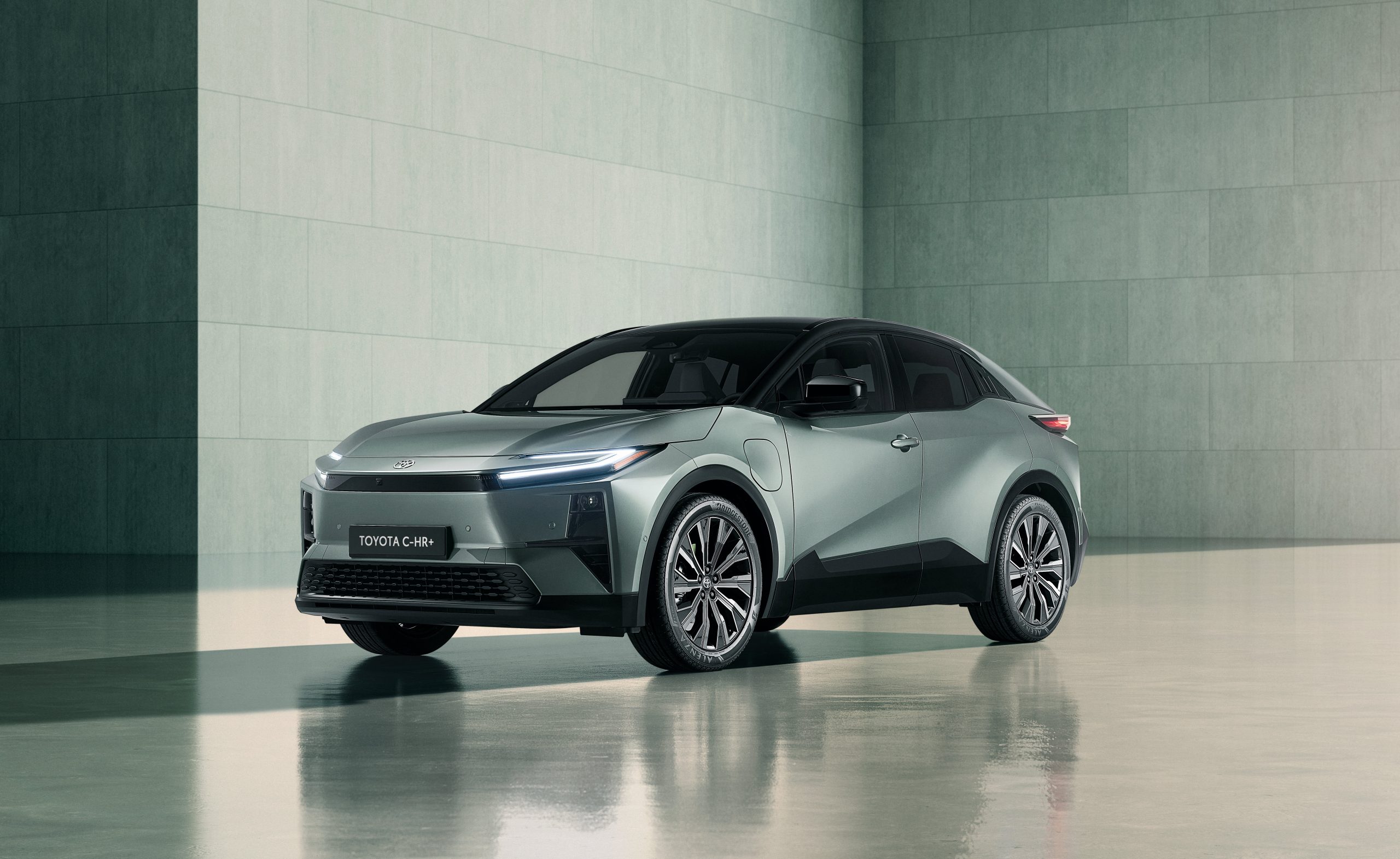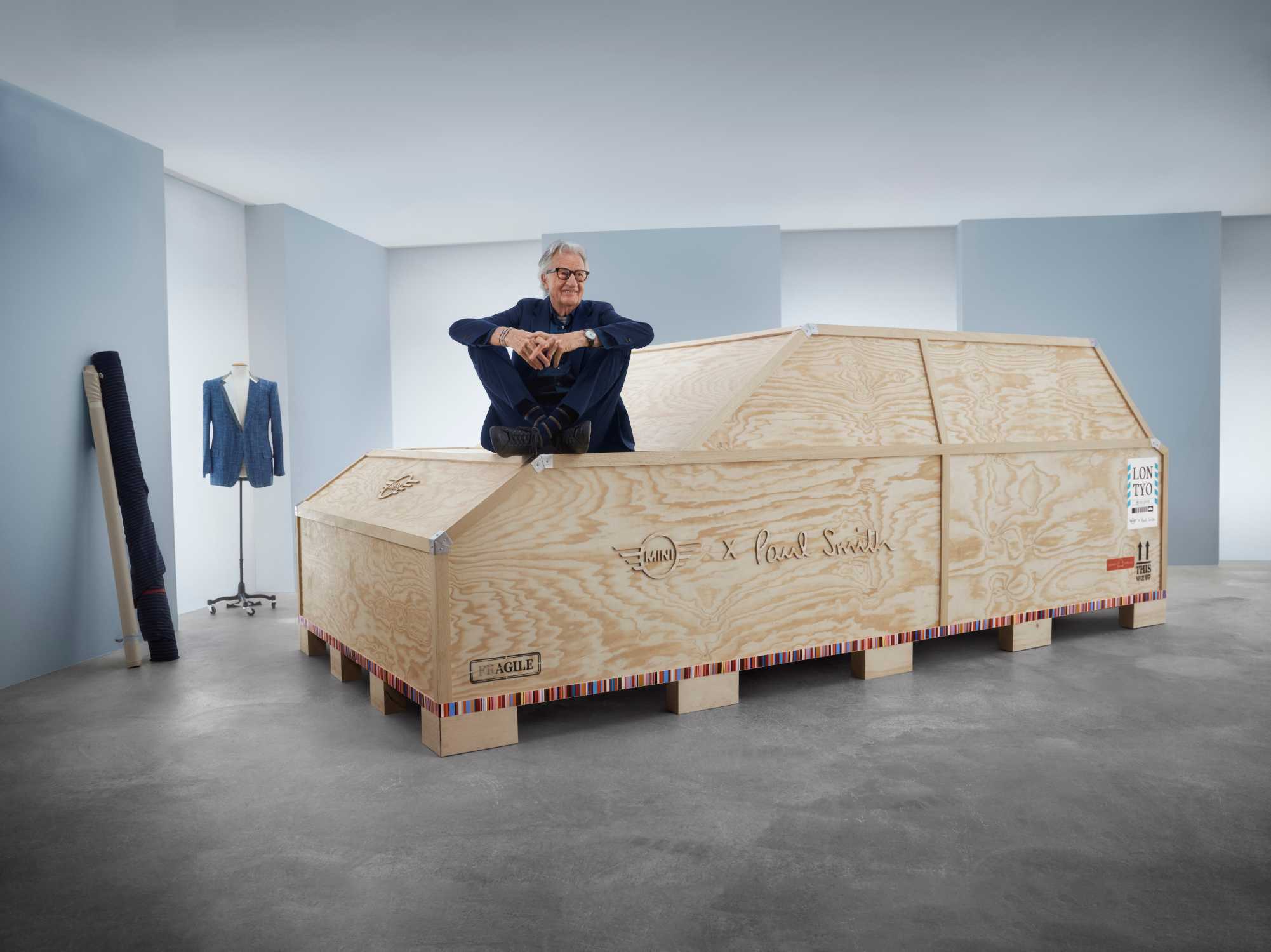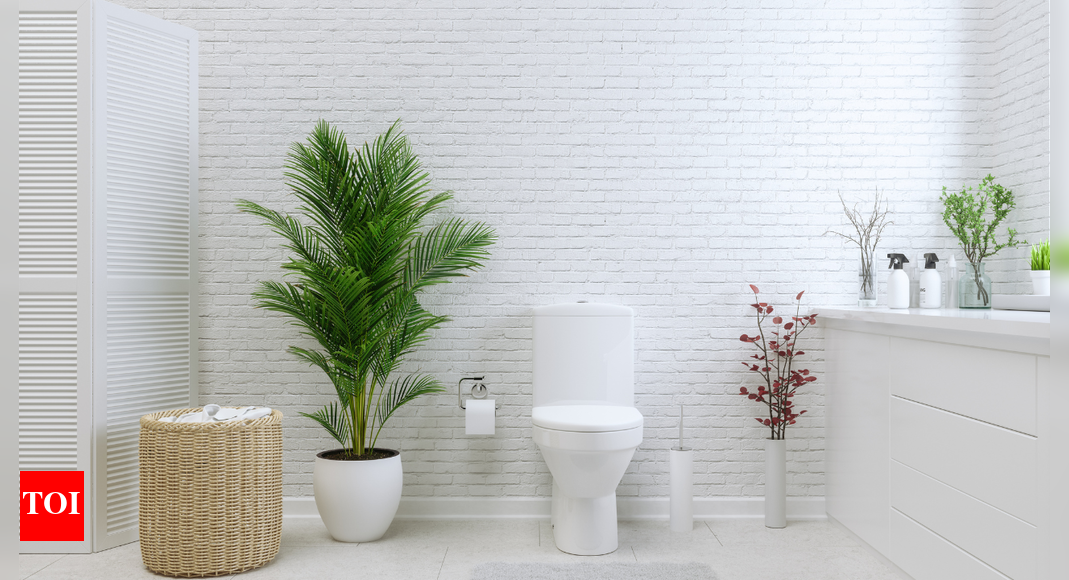Your morning poop can be a window into your well-being — if you know what to look for. Thanks to technology, that closer look can now be automated. From AI-powered apps analysing stool colour, shape, and consistency to detect potential…
Blog
-

175+ CVEs, 3 under attack • The Register
Spooky season is in full swing, and this extends to Microsoft’s October Patch Tuesday with security updates for a frightful 175 Microsoft vulnerabilities, plus an additional 21 non-Microsoft CVEs. And even scarier than the sheer number of bugs:…
Continue Reading
-

Fatal Attraction: Electric Charge Connects Jumping Worm To Aerial Prey
A tiny worm that leaps high into the air — up to 25 times its body length — to attach to flying insects uses static electricity to perform this astounding feat, scientists have found. The journal PNAS published the work on the…
Continue Reading
-

From insight to impact: How clinical decision support is powering precision medicine in Middle East
From clicks to clinical impact
Beyond point-of-care support, clinical decision support solutions also offer powerful analytics. “We’re not just tracking usage—we’re translating it into insights,” said Fulcher. “We can show hospitals what clinicians are searching for, how that aligns with prescribing patterns, and where there are gaps in knowledge or compliance.”
Integration and accessibility: Meeting clinicians where they are
To maximize impact, clinical decision support tools must be embedded into clinical workflows. “The ideal solution is one click away—within the EMR, mobile app, or even Microsoft Copilot,” said Fulcher. “We’re building a hub-and-spoke model where trusted content is accessible wherever clinicians need it.”
Dr. Ahmed Al-Dammas, Chief Data Officer at the Saudi Council of Health Insurance, stressed the importance of seamless access: “If it’s not integrated, it’s not used. Single sign-on, mobile optimization, and HL7 integration are no longer nice-to-haves — they’re must-haves.”
While the clinical benefits are clear, the financial case is equally compelling. “CDS tools reduce adverse drug events, shorten hospital stays, and improve formulary compliance,” said Dr. Abu-Gheida. “That’s real ROI—especially in value-based care models.”
Dr. Osama Hassan added, “If we want to move from fee-for-service to outcomes-based reimbursement, we need solutions that link decisions to results. Wolters Kluwer’s UpToDate® and Medi-Span® do exactly that.”
Looking ahead: A shared vision for safer, smarter care
As the Think Tank concluded, one message resonated: precision medicine is a team sport. It requires collaboration across clinicians, technologists, regulators, and solution providers.
“We’re not just building tools—we’re building trust,” said Fulcher. “And that trust is what turns insight into impact.”
Continue Reading
-

The all-new battery electric Toyota C-HR+
- A core model in Toyota’s multi-pathway portfolio, strengthening the brand’s electric SUV line-up
- Robust EV fundamentals: a choice of battery options and powertrains, plus user-friendly charging methods
- Designed for car lovers, with a rewarding, fun-to-drive character, founded on Toyota’s dedicated e-TNGA platform
- Stylish coupe-SUV design with no compromises in comfort, practicality or safety
- To be launched in the UK in early 2025
- UK model range and specifications to be announced
The all-new Toyota C-HR+ showcases Toyota’s commitment to creating battery electric vehicles (BEVs) for car enthusiasts, offering emotional appeal through bold design and engaging driving characteristics, coupled with everyday practicality.
Building on the achievements of the Toyota C-HR, which has amassed more than one million sales in Europe through two generations, the Toyota C-HR+ goes further as a stand-alone, all-electric model.
A choice of powerful and efficient all-electric powertrains coupled with fast, convenient charging solutions establish a dependable and desirable foundation for a true BEV and authentic SUV, designed to appeal to a wide customer base in the mid-size C-SUV segment.
A striking design is achieved inside and out without compromising comfort or versatility. The smooth, calm ride typical of an all-electric powertrain is enhanced through additional measures to increase comfort and convenience.
The Toyota C-HR+ is agile, responsive and fun to drive thanks to its rigid chassis and suspension tuning, engineered using the dedicated e-TNGA electric vehicle platform. It also reflects Toyota’s commitment to quality and safety, including the latest driver assistance technologies and a 10-year battery warranty**.
It takes its place alongside the new Urban Cruiser and bZ4X as a core model in Toyota’s all-electric SUV portfolio. This line-up reinforces Toyota’s multi-pathway strategy by joining hybrid, plug-in hybrid and hydrogen fuel cell electric vehicles to deliver sustained vehicle emissions reductions towards achieving carbon neutrality in Europe in 2040.
Power and performance
- Two battery options
- Faster DC charging supported by battery pre-conditioning
The all-new Toyota C-HR+ is a showcase for Toyota’s latest BEV technologies, establishing the fundamental qualities which express the company’s commitment to building electric vehicles for true car enthusiasts.
To meet different customer needs, whether for day-to-day life in urban traffic or longer journeys and adventures, it is offered with two battery options.
A 57.7kWh (gross capacity) battery delivers a power output of 165bhp (167 DIN hp/123kW) and has a maximum driving range (WLTP cycle) of up to 283 miles*.
For customers wanting more power and greater range, a 77kWh battery provides 221bhp (224 DIN hp/165kW) and delivers up to 378 miles*.
The high-capacity lithium-ion batteries use the latest technologies to give customers fast-charging options. Battery pre-conditioning contributes to a targeted fast DC charging time from 10 to 80 per cent of around 30 minutes in temperatures as low as -10°C. This would mark a 20-minute improvement on charging without a pre-conditioning function.
The pre-conditioning system ensures the battery reaches the ideal temperature before charging begins, allowing for higher charging power, even in cold conditions. This is achieved using a water-to-water heat exchanger which heats all the battery cells evenly and delivers consistent operation.
There are three options for initiating battery pre-conditioning: manually via the car’s multimedia system; scheduled in advance to start at a specific time; and automatic operation when using the car’s navigation system to reach a charging station destination.
An 11kW onboard AC charger is included as standard; high grade model uses a faster 22kW unit, which effectively halves the recharge time.
Driving dynamics
- Underfloor battery lowers the centre of gravity and enhances torsional rigidity
- Optimised suspension tuning
- Regenerative braking options for tailored driver engagement
- Insulation and noise damping for a peaceful all-electric ride
Toyota’s dedicated e-TNGA battery electric vehicle architecture provides the foundation for a fun-to-drive experience and comfort for all passengers. The modular platform – also used by the bZ4X model – delivers improved driving dynamics thanks to a BEV-specific design. It is also scalable, enabling the development of different vehicle sizes and powertrains.
The new Toyota C-HR+ exploits the adaptability of the e-TNGA platform to create a unique body and interior while delivering rewarding handling, ride comfort and stability.
An underfloor-mounted battery is a key e-TNGA design feature. By fixing it to the underfloor frame, torsional rigidity is improved by 30 per cent and the centre of gravity is lowered by 65mm compared to the Toyota C-HR. At the same time, ground clearance of 185mm is maintained.
The low centre of gravity and dedicated suspension tuning deliver a refined and comfortable ride, striking an ideal balance between agility and comfort.
Four levels of regenerative braking contribute to an intuitive and engaging drive, selected using paddle shifts behind the steering wheel. The high responsiveness of the electric motor allows coasting deceleration of up to 0.15G when the driver releases the accelerator pedal, operating with a natural feel and compensating for around 80 per cent of deceleration when driving. This feature not only enhances driver control but also maximises efficiency by replenishing the battery during deceleration.
The electric power steering has also been mapped for responsiveness. It adjusts the steering characteristics dynamically, providing a light feel at low speed and a more direct sensation at higher speeds.
The Toyota C-HR+ is equipped with the latest lightweight Toyota eAxle – consisting of inverter, motor and transaxle – with silicon-carbide (SiC) semiconductors for efficiency and high-power output. The unit’s design, incorporating cooling and lubrication systems, minimises energy losses and delivers superior power, stability and quieter performance.
Adding to the ride quality, noise insulating and absorbing materials and silencers have been strategically installed to create a peaceful cabin environment. Optimised body rigidity and high-damping floor adhesive further contribute to onboard comfort.
Engineered for efficiency
- Aerodynamic design with low drag
- Energy-efficient low-power heat pump
- Heated front seats and steering wheel reduce air conditioning demand
The all-new Toyota C-HR+ benefits from several measures which help drivers extend the car’s range while still enjoying a comfortable and engaging drive.
The exterior design blends dynamic proportions with excellent aerodynamic performance, achieving a class-leading 0.26 drag coefficient. This contributes to efficient driving and a long range.
Within a 2,750mm wheelbase (110mm longer than the Toyota C-HR), the underfloor area has been made as flat as possible to minimise turbulence and energy loss. A variety of other measures contribute to a low drag performance on all versions.
The grille-less front face and an air duct in front of the wheels reduce turbulence and smooth air flow. Along the side of the vehicle, concealed rear door handles and aerodynamic wheel designs also support the car’s aero-efficiency.
A roof mounted spoiler and a distinctive ducktail rear end manage air flow away from the vehicle, with fins on the bottom of the rear bumper helping reduce air flow separation.
Several features reduce the impact of the air conditioning on driving range, without compromising comfort. The system uses heat pump that operates at high efficiency with low power usage. By taking thermal energy from outside air to heat the cabin, it uses less power than a standard system.
On cold days, heated front seats and a heated steering wheel – standard across all grades – help reduce reliance on the air conditioning system. They consume comparatively less power than the air conditioning system while still ensuring a comfortable temperature for driver and front passenger.
Stand-out, sleek exterior design
- Grille-less face and Toyota’s signature hammerhead design
- Distinctive coupe roofline with no compromise on rear headroom
The all-new Toyota C-HR+ has been styled to prompt an emotional reaction at first sight. It communicates agility and purpose from every angle, expressing a stylish modern look.
Its character is based on a strong, coupe-inspired silhouette. The sharply defined lines and sculpted surfaces create a sense of motion even at standstill, while the wide stance and low roofline give the car a sporty stance. The roofline is achieved without compromising headroom for rear seat passengers.
At the front, Toyota’s signature hammerhead design language is expressed through sleek LED headlamps and a clean, grille-less face, characteristic of battery electric vehicles.
Sharply defined character lines at the rear combine with a sleek light design to express an advanced image, while a low rear bumper emphasises the vehicle’s nimble handling.
The stand-out Metal Oxide and Mineral exterior colour options are available as a monotone finish or, on high grade models, a bi-tone combination with a contrasting black roof.
The 20-inch alloy wheels on higher grades are styled to emphasise sportiness and urban sophistication, ensuring the Toyota C-HR+ looks as confident in the city as it does on the open road.
An advanced and spacious interior
- “Class above” interior space with generous headroom, front-rear distance and storage
- Fully digital seven-inch driver’s combimeter and 14-inch multimedia screen
- Premium and sustainable upholsteries
Roominess and all-round visibility help the Toyota C-HR+ stand out in terms of comfort and versatility, alongside technology features, connected services and high-quality materials which create a modern in-car environment.
The cabin provides more space than typically expected of a C-segment SUV, with generous headroom and a 900mm front-rear couple distance. This has been made possible by the 2,750mm wheelbase within an overall vehicle length of 4,520mm.
The load compartment provides 416 litres of storage, achieved thanks to a rear overhang extended by 50mm (compared to the Toyota C-HR). Different boot configuration options create smart storage solutions. The rear seats – divided 60:40 – can be easily folded flat, while an adjustable deck board offers underfloor storage when set to its highest level, or maximum boot space when installed lower down. On selected grades, a power tailgate comes as standard.
A streamlined interior creates an open, welcoming feel. Ambient lighting offers a choice of 64 different colours to create the right mood for any journey. It is not only visually striking but also enhances the perception of space within the cabin, particularly when paired with an optional panoramic roof.
For the driver, a high-resolution, seven-inch full graphic combimeter replaces traditional analogue gauges and features a crisp display that adapts to driving conditions and user preferences. It shows essential driving data, including speed, battery status, range, regenerative braking level and turn-by-turn navigation prompts. Its low-profile, simplified shape is located above the steering wheel, helping the driver keep their eyes focused on the road.
On high grade models, a heated front windscreen and powered driver’s seat with memory function are included in the specification.
Rear-seat occupants have access to air conditioning controls and two USB-C ports with a combined 60W of power, enough to charge larger devices such as laptop computers.
A range of different upholstery materials are offered, according to model grade, including synthetic leather, a suede-like trim, and fabric – all made using recycled PET materials. These sustainable choices help reduce CO₂ emissions while adding to the sporty and refined feel of the interior.
A six-speaker audio system delivers clear, balanced sound, while a JBL Premium Audio option features nine speakers, an 800W amplifier and a nine-inch subwoofer. It is engineered to provide a rich, immersive listening experience that complements the refinement of the all-electric powertrain.
Technologies for safety and connectivity
- Toyota Safety Sense and advanced driving assistance features as standard
- 14-inch multimedia display and seamless mobile phone connectivity
- A user-friendly BEV ecosystem via MyToyota app
The Toyota C-HR+’s advanced looks and powertrain are matched by the latest technologies for comprehensive safety, driver assistance and onboard connectivity. Driving is safer and easier with early detection of a wide range of accident hazards and automatic brake activation when needed, and steering and power control to help the driver avoid an impact.
The interior ambient lighting system contributes to safety by providing an additional warning linked to the car’s Safe Exit Assist, lighting the interior door handles red if it detects a risk of a door being opened into traffic approaching from the rear.
Other standard provisions include a Blind Spot Monitor, Adaptive High-beam System headlights and a Parking Support Brake. High grade vehicles gain Lane Change Assist, Front Cross Traffic Alert, Park Assist, and a Panoramic View Monitor.
The 14-inch multimedia digital display is centrally positioned and accessible to both driver and front passenger. Its intuitive interface controls the multimedia functions and cloud-based navigation.
The navigation includes Destination Assist, available through the Drive Connect subscription, which delivers up-to-date routing and real-time traffic data, helping drivers plan journeys with confidence.
Wireless Apple CarPlay and Android Auto enable seamless smartphone integration. A voice agent can be activated with a “Hey Toyota” prompt, enabling natural speech control of the car’s navigation, multimedia and climate functions.
Life is made even more simple and intuitive by the MyToyota app. This includes full connection to the Toyota HomeCharge domestic wallbox, so that owners can easily monitor, manage and control their charging via the app.
New features make it simpler to schedule smart charging for convenience and access to lower electricity tariffs, as well as giving customers the ability to view their billing history at-a-glance.
To replenish the battery away from home, the Toyota Charging Network provides seamless access to one of the largest pan-European EV charging networks, via the MyToyota app. It is now easier than ever to get started, with billing information displayed on the app.
A new feature gives an instant read-out of the vehicle’s state of charge on the user’s mobile device. For easy navigation to a charging point, the Send to Car function allows users to transmit a selected location from their phone directly to their car at the press of a button.
The MyToyota app also allows users to remotely activate the climate control, to heat or cool the cabin efficiently ahead of a journey, reducing the demand on air conditioning systems during the trip and thus potentially enhancing the driving range.
To further maximise range, a BEV coaching tool assesses previous journeys and offers advice on how to improve driving range and efficiency.
Ownership peace of mind
Customers, particularly those purchasing a BEV for the first time, can be assured the Toyota C-HR+ has all the Quality, Durability and Reliability attributes that are a hallmark of the Toyota brand.
In common with all Toyota’s new BEVs, it will come with Toyota’s Battery Care Program which covers the battery each year for up to 10 years of vehicle age or up to 650,000 miles/1,000,000km driven, subject to an annual battery health check**.
Market introduction
The all-new Toyota C-HR+ will be launched in the UK and across Europe in the fourth quarter of 2025.
*All performance data remain tentative prior to homologation.
** Toyota’s confidence in the quality of the battery is reflected in a guarantee it will retain at least 70 per cent of its capacity up to 10 years of vehicle age, covered by the original EV Manufacturing Warranty until eight years of vehicle age or 160,000 kilometres, and with the Battery Care Program up to 10 years of vehicle age or 1 million kilometres driven that is activated by an annual EV Health Check (T&Cs and local country conditions apply).
Toyota C-HR+ provisional technical specifications (tentative data prior to homologation)
DRIVETRAIN 57.7kWh 77kWh Type Permanent magnet, synchronous motor Drivetrain Front-wheel drive Toyota system output (bhp/DIN hp/kW) 165/167/123 221/224/165 Motor torque (Nm) 268.6 BATTERY 57.7kWh 77kWh Type Lithium-ion Number of cells 78 104 Rated voltage (V) 288.6 384.8 Capacity (gross, kWh) 57.7 77 PERFORMANCE 57.7kWh 77kWh Max. speed (mph) 87 99 0-62mph acceleration (sec) 8.4 7.3 Driving range – WLTP, 18in wheels (miles) 283 378 Driving range – WLTP, 20in wheels (miles) – 350 BRAKES Type Ventilated discs EXTERIOR DIMENSIONS Overall length (mm) 4,520 Overall width (mm) 1,870 Overall height (mm) 1,595 Wheelbase (mm) 2,750 Front track (mm) 1,605 Rear track (mm) 1,620 Min. running ground clearance (mm) 185 Turning radius – tyre (m) 5.5 Turning radius – body (m) 5.9 Tyre size – 18in 235/60R18 Tyre size – 20in 235/50R20 Wheel size – 18in 18 x 7.5 Wheel size – 20in 20 x 7.5 INTERIOR DIMENSIONS Length (mm) 1,835 Width (mm) 1,502 Height 1,174 1,153 with panoramic roof Load capacity, including beneath deck board, seats up, up to bottom of rear headrests (l) 416 WEIGHTS 57.7kWh 77kWh Kerb weight (kg) 1,810-1,845 1,885-1,985 Gross vehicle weight (kg) 2,465 2,520 Towing capacity – braked (kg) – 750 ENDS
Continue Reading
-

The Protein Swap That May Help with Weight Loss
- Men who swapped beans for meat lost weight without cutting calories, a study found.
- Replacing red meat with legumes also lowered LDL cholesterol in just six weeks.
- Easy swaps like bean tacos or mixed burgers can improve health without overhauling…
Continue Reading
-

MINI and Paul Smith at the Japan Mobility Show 2025.
Munich / Tokyo. The Japan Mobility Show 2025 becomes
the stage for the latest milestone in the long-standing collaboration
between MINI and British designer Paul Smith. It will be unveiled as
part of the BMW Group Keynote on 29 October 2025 at 09:55 (JST) at the
BMW Group stand, based in the West Exhibition Hall of the show.MINI and Paul Smith: A creative success story.
The MINI Paul Smith Edition is a new chapter in the success story of
the two British brands. The long-lasting relationship began in 1998,
when the designer wrapped a Classic Mini Cooper in his trademark
visual design. To mark the 40th anniversary of the Classic Mini in
1999, the designer lent his characteristic Paul Smith “Signature
Stripe” to a one-off model. After two further one-offs – the MINI
Strip in 2021 and the MINI Recharged by Paul Smith in 2022 – Paul
Smith’s design language returns to MINI.MINI model portfolio.
As part of the BMW Group stand at the Japan Mobility Show, MINI is
presenting the diverse range of its current product portfolio. The
MINI Cooper family is represented by showcasing the MINI Cooper SE,
which combines heritage, technology and driving pleasure. Whilst
providing a fully electric go-kart feeling via the 218 hp electric
powertrain. Also present will be the MINI Cooper 5-door S, which
combines compact dimensions and agility whilst showcasing increased
practicality when compared to its 3-door siblings. A MINI Cooper
Convertible will also be on show, which presents open-air driving in
the spirit of its ‘Always Open’ philosophy: agile, spontaneous and
full of driving pleasure.Launched earlier this year, the MINI John
Cooper Works Aceman outlines its sporty all-electric useable
performance from the John Cooper Works sub-brand. The latest model in
the MINI family presents itself as a versatile companion and not only
demonstrates MINIs typical “Clever Use of Space” – but also
brings a powerful driving experience to the road as a
performance-enhanced version thanks to 258 hp produced from the 54.2
kWh electric battery. Finally, the MINI Countryman S ALL 4 will also
be present on the BMW Group stand at the Japan Mobility Show: as the
largest of the MINI family, the car offers generous space and fits in
perfectly for those looking for longer adventures and spontaneous exploring.Japan Mobility Show.
The Japan Mobility Show is regarded as one of the most important
international platforms for pioneering mobility concepts. From October
29 to November 9, over 130 exhibitors will be presenting their
innovations to visitors and press at the Tokyo Big Sight exhibition
centre – making the Japanese capital the centre for visions of
tomorrow’s mobility.In case of queries, please contact:
Corporate Communications
Franziska Liebert, Spokesperson MINI
Phone: +49-151-601-28030
E-mail: franziska.liebert@mini.comMicaela Sandstede, Head of Communications MINI
Phone: +49-176-601-61611
E-mail: micaela.sandstede@bmw.deMINI Cooper SE (WLTP combined: 14.7 – 14.1 kWh/100 km according to
WLTP; CO2 emissions combined: 0 g/km; CO2-class: A; Range in km
according to WLTP: 387 – 402).MINI Cooper S 5-Door (WLTP combined: Power consumption 6.8 – 6.3 l
/100 km; CO2 emissions 152 – 141 g/km; CO2 class E).MINI Cooper Convertible S (WLTP combined: Power consumption 6.6 – 6.5
l /100 km; CO2 emissions 150 – 148 g/km; CO2 class E).MINI John Cooper Works Aceman (WLTP combined: 16,4 – 16,0 kWh/100 km
according to WLTP; CO2 emissions combined: 0 g/km; CO2-class: A; Range
in km according to WLTP: 355 – 344).MINI Countryman S ALL4 (WLTP combined: 7.4 – 6.8 l/100 km according
to WLTP; CO2 emissions combined: 169-155 g/km).Continue Reading
-

Jennifer Aniston Explains Why She Never Adopted Kids
Jennifer Aniston is opening up about why she never adopted children.
Aniston, 56, has previously spoken publicly about her efforts to have kids, but on a Wondery+ early access episode of the Armchair Expert podcast, Aniston discusses what…
Continue Reading
-

Newborn Essentials: Vogue’s Guide To The Baby Essentials All New Parents Need
The announcements have been made, the doctors’ appointments are scheduled (far, far in advance), and the gender has been revealed (whether privately, between the two of you, or to close relatives over a FaceTime call). But before the baby…
Continue Reading

